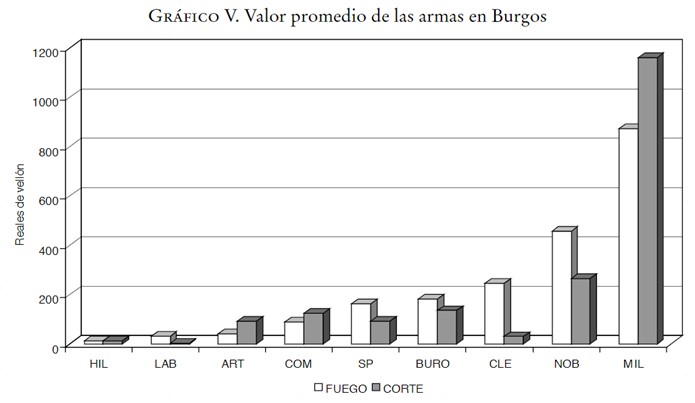The city of Barcelona was characterised by an armed society for much of the modern period. This was due to the city’s strategic location on the border with France, which, together with the statutes that only allowed arming armies for self-defence, led Charles I to grant permission to arm citizen armies in 1544. In this way, the monarchy not only ensured cost savings, but also allowed the area to be well protected against invasion attempts. The possession of arms in this context was much higher in the third estate than among the nobility or the militia, which shows the existence of widespread smuggling. This led to serious public order problems during the reign of Philip II, specifically between 1575 and 1590, when veritable networks of bandits were set up, creating a climate of insecurity that was difficult to remedy.
Collection: Statistics
Project: 6. Under a cloak of terror: violence and armed conflict in Europe.
Chronology: XVI
Scope: Secondary Education, Baccalaureate, University
Link: https://rua.ua.es/dspace/bitstream/10045/28505/1/RHM_21.pdf
Resource type: Statistics
Format: Table
Source: ESPINO LÓPEZ, Antonio. La sociedad catalana y la posesión de armas en la Época Moderna, 1501-1652. Revista de Historia Moderna, [S.l.], n. 21, p. 447-472, oct. 2003. ISSN 1989-9823. Disponible en:
Language: Spanish
Date: 2003
Owner: Djebril Bouzidi (Modernalia)
Identifier: ESPINO LÓPEZ, Antonio. La sociedad catalana y la posesión de armas en la Época Moderna, 1501-1652. Revista de Historia Moderna, [S.l.], n. 21, p. 447-472, oct. 2003. ISSN 1989-9823. Disponible en:
Copyright: ©Antonio Espino López y © Revista de Historia Moderna
Abstract: Militia army supported by the city of Barcelona in 1534. 1544 and 1553
Tags







